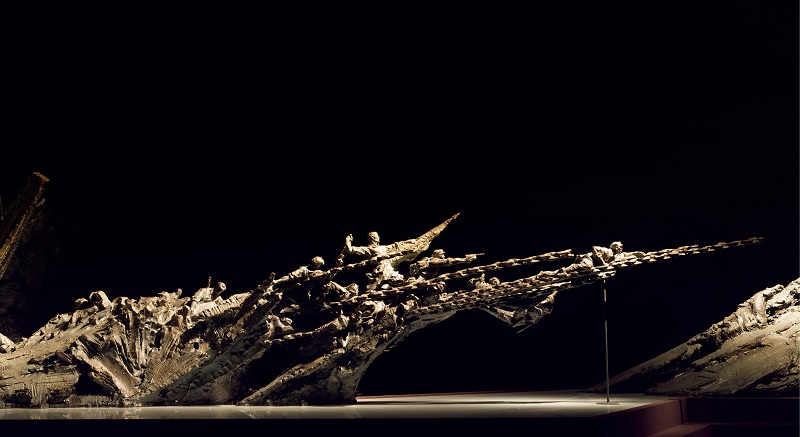
Large sculpture Long March by national gallery curator Wu Weishan and his team.
Since having its Chinese name inscribed by Chairman Mao Zedong and opening to the public on May 23, 1963, the National Art Museum of China (NAMOC), China’s national gallery, has come a long way.
Over the 60 years since its launch, NAMOC has served as both a witness of, and platform for, the vigorous development of Chinese arts as well as the country’s cultural exchanges with other civilizations around the world.
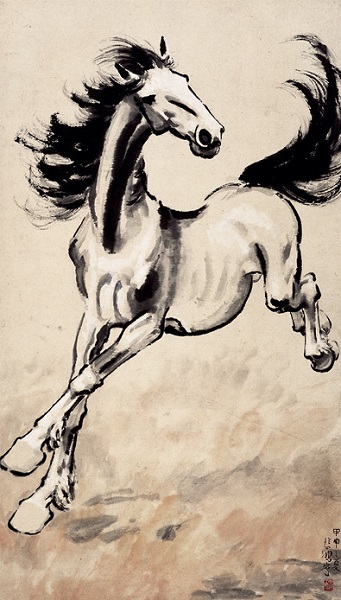
Running Horse by Xu Beihong.
Classic and Creative
On a sweltering summer day, a long queue had formed outside NAMOC before it opened at 9 a.m. The eager visitors came to see the exhibition series in celebration of the 60th anniversary of the gallery’s founding, which ran from May 23 to August 6. The series featured several themed exhibitions, including “Prosperity in Diversity,” a collection of international artworks, “A Tribute to the Classics,” fine arts from the collection of NAMOC, “Ink Splendor and Cultural Context,” an exhibition of Chinese freehand brush paintings, and “Majestic Baota Mountain and Yanhe River,” which is dedicated to the Chinese Red Army’s Long March and the revolutionary base Yan’an.
The museum allowed in 6,000 people daily and was fully booked throughout the event. The reason became obvious after seeing the works on display.
At the theme exhibition of “A Tribute to the Classics” on the first floor of the NAMOC complex, visitors were awed by an array of masterpieces by household name artists. Among them were the horses painting by Xu Beihong, Spring Snow by Wu Guanzhong, Pine Trees in Mist by Huang Binhong and Father by Luo Zhongli.
The exhibition juxtaposed the ancient and the modern. Front and center in the space was the 900-year-old bamboo and rock painting by Northern Song poet Su Shi (1037-1101). On a wall nearby stood a digital replica of Crossing the Yangtze River and Liberating the Entire China, a sculpture by NAMOC’s first curator Liu Kaiqu.
The section also covered more than 100 creations by the most celebrated international artists, such as Pablo Picasso, Käthe Kollwitz, and Ansel Adams. They are from the collections of, and donations to, NAMOC.
The “Ink Splendor and Cultural Context” exhibition spans the space on three floors of the museum, with exhibits from both ancient and modern China. The ancient part featured Chinese freehand brush paintings by Zhu Da and Zhu Ruoji, two painters from the late Ming and early Qing dynasties. Other exhibits were paintings by modern artists since the 20th century. This transition from past to present is aimed to highlight Chinese artists’ commitment to both tradition and innovation and to showcase the lasting vitality of the Chinese culture.
NAMOC houses more than 130,000 works of art, including antiques from different periods of Chinese history and nearly 4,000 by foreign artists. They are the results of a collection spanning many generations and donations by many artists, their families and art institutions.
By hosting the exhibition of “A Tribute to the Classics,” the museum pays its respects to great artists, individuals, and institutions, as well as their families who made the donations, said Wu Weishan, NAMOC curator. In addition to displaying, studying, and creating art works, the museum will adopt new digital technologies to expand its reach to young audiences and give a new lease of life to its collections.
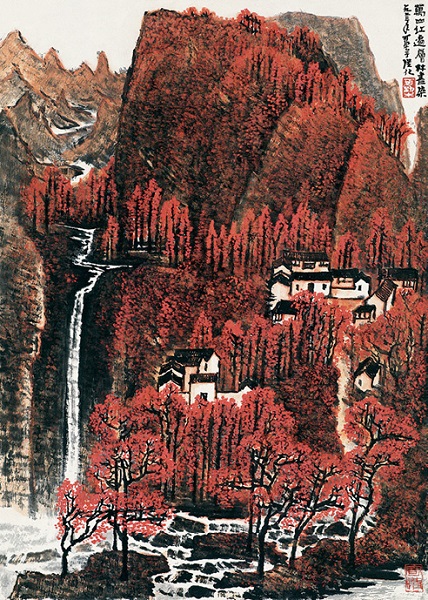
Red over the Mountains As If the Forests Are Dyed by Li Keran.
Revolutionary Heritage
The exhibition of “Majestic Baota Mountain and Yanhe River” is dedicated to the revolutionary spirit best shown during the Long March of Chinese communists and their years in Yan’an in the 1930s-40s.
A centerpiece at this section is the sculpture series of Long March by an artist team headed by Wu Weishan. Accompanying their sculpture creations in the exhibition are photos capturing moments of their field trips in Sichuan, Fujian, Guizhou, and other parts of China.
May 23, 2023 marks the 60th anniversary of NAMOC and also the 81st anniversary of Mao Zedong’s important speech on literature and art in 1942, which set the tone for the then literature and art policy of the Commuist Part of China (CPC). Carrying on the revolutionary heritage and reinforcing the communist belief has been a mission of NAMOC throughout its history.
In 2017 and 2022, it hosted two exhibition series under the theme of “Beauty in the New Era” in celebration of the 19th and 20th national congresses of the CPC. The exhibitions attracted more than 20,000 visitors daily and became one of the most talked about cultural events of the year.
In fact, NAMOC has been visible at every historical juncture of China over the past 60 years, by means of its exhibitions on milestone events, such as the 40th anniversary of China’s reform and opening-up, the 70th anniversary of the founding of the People’s Republic of China, and the centennial of the founding of the CPC. In arts, people find beauty, unity and inspiration, and feel the pulse of their times.
The museum also holds public events regularly, including on-site sculpture creation for outstanding CPC members, teachers and nurses, lectures on aesthetics by prominent figures, painting contests participated in by special needs children, and programs under partnership with cultural organizations in other parts of China. In 2021, NAMOC was named a national base for patriotic education.
“Through arts of beauty and with genuine love, we provide nourishment for the soul, helping people to gain inner strength and confidence in our culture,” said Wu.
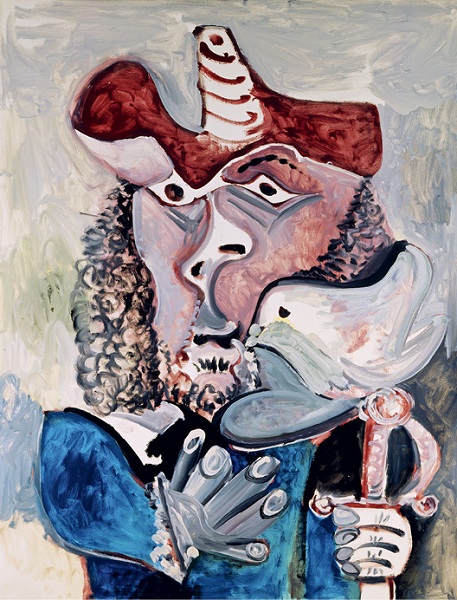
Foot Solider with a Bird by Pablo Picasso.
Prosperity in Diversity
Works of oil on canvas featuring the Volga by celebrated Russian artist Valentin Mikhailovich Sidorov, bright sunflowers by Georgian sculptor and painter Zurab Konstantinovich Tsereteli, and the intaglio by Slovenian artist Alja Kosar are among the 70-plus artworks in the “Prosperity in Diversity” exhibition of international artworks.
Wang Ruoshan, a 10-year-old from Liaoning Province, showed intense interest as she observed the exhibits one by one. Though the deeper meaning of these creations is elusive for a child of her age, the beauty of civilizations around the world left a deep impression on her.
Older viewers are more perceptive. “In the works by artists from different countries, I can see their shared aspiration for building a global community of shared future. Fine arts can indeed build a stronger bond between countries and peoples,” said a college student surnamed Shan from Hebei Province.
With the mission of promoting understanding through culture and bringing hearts closer through arts, NAMOC has served as an important channel for dialogue of the art circles in China and the rest of the world. Over the past decade or more, it hosted 80-plus international exhibitions, added 711 works by 178 artists from 101 countries and regions to its collections, and opened the “Night at the Museum,” an event exclusively for foreign visitors. These endeavors have introduced Chinese culture to more international audiences and foreign art to more Chinese viewers.
After China proposed the Belt and Road Initiative in 2013, NAMOC initiated the Silk Road International Alliance of Art Museums and Galleries and BRICS Alliance of Art Museums and Galleries. Since 2015, NAMOC theme exhibition on Chinese freehand brush paintings has toured multiple countries. Its 2019 exhibition on Asian artworks was a massive success. And the many academic events it organized over recent years, such as the International Symposium on National Art Collections Conservation in 2016, all contributed to cultural exchanges and mutual learning between China and other countries.
Throughout its history of 60 years, NAMOC has diligently performed its multiple functions – building art collections for the nation, providing art exhibitions for the public, organizing educational activities for the people, and telling China stories through international exchanges. In the new era, the museum is working to make itself a sanctuary of the arts at the national and international levels, where members of the public appreciate art and improve their aesthetic and cultural literacy, said Wu Weishan.
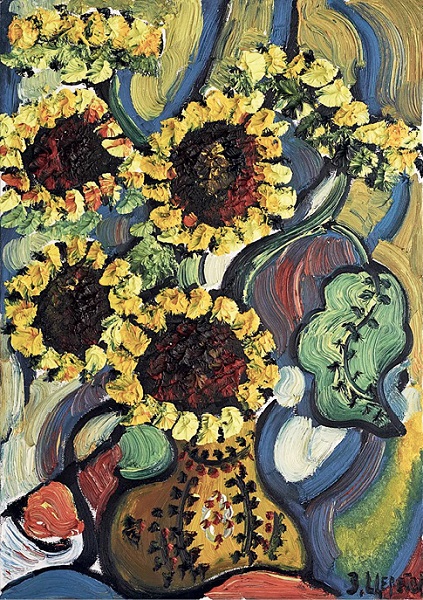
Beijing Sunflowers by ZurabTsereteli.